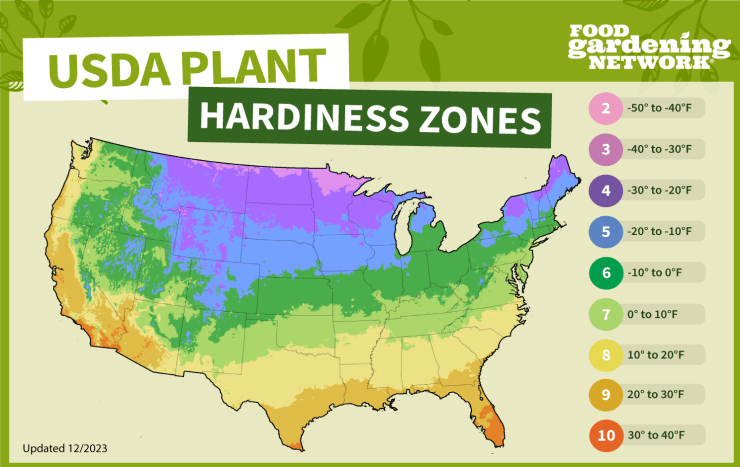Basil is an annual herb that grows best in USDA hardiness zones 2-11. Some of the US states that fall under these zones are:
Zone 2:
- Alaska
Zone 3:
- Minnesota
- Montana
- North Dakota
- Wisconsin
Zone 4:
- Illinois
- Indiana
- Iowa
- Michigan
- Missouri
- Nebraska
- Ohio
Zone 5:
- Connecticut
- Massachusetts
- New Hampshire
- New York
- Pennsylvania
- Rhode Island
- Vermont
Zone 6:
- Delaware
- Maryland
- New Jersey
- North Carolina
- Virginia
- West Virginia
Zone 7:
- Arkansas
- Kentucky
- Oklahoma
- Tennessee
Zone 8:
- Alabama
- Georgia
- Louisiana
- Mississippi
- South Carolina
- Texas
Zone 9:
- Arizona
- California
- Florida
- Hawaii
- Nevada
- New Mexico
Zone 10:
- Puerto Rico
- Virgin Islands
Zone 11:
- Guam
Basil can be grown indoors, but it requires a lot of light and space. Basil needs at least 6 hours of full sun daily, so place it near a sunny, south-facing window where it gets bright light every day, and it will thrive. Alternatively, basil does exceptionally well under grow lights. Basil should be planted in well-drained, nutrient-rich soil. Using the proper soil type is important in order to successfully grow basil inside.
Basil thrives when it receives about 1 inch of water a week, but plants housed in containers often need a bit more than that. Basil is easy to grow. It requires little maintenance other than watering and fertilizing. Basil is also relatively pest and disease-free. It’s a compact plant that easily fits on a windowsill in even the smallest apartment space 5.
Check out the USDA Plant Hardiness Zone Map and find out what zone your zip code is located in here. Or you can use our map to get a general idea of what your plant hardiness zone is.



 Previous
Previous


Colorado is not listed either – Zone 4-5-6 depending on elevation, etc. States are not a good category for those including deserts & mountains & plains in one area.
You should update your growing zone map…..the map you are using is obsolete as of 2024
You Did not include Washingtom State in your basil zones. I grow basil in WA, zone 8.